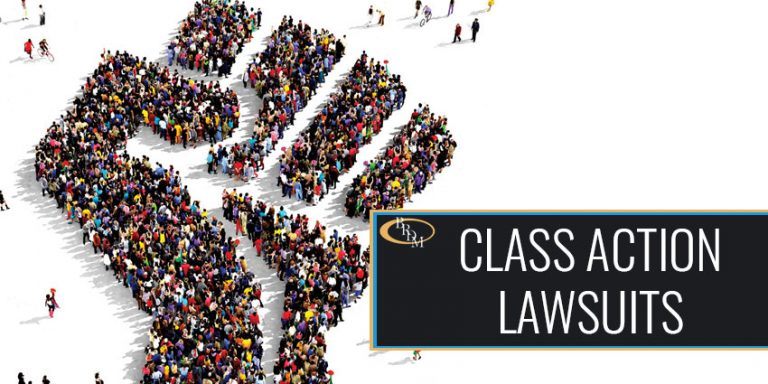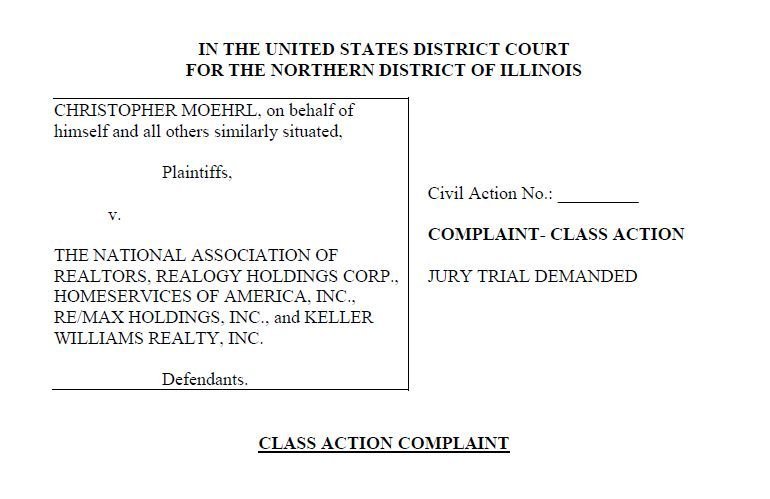The Archer-Daniels-Midland Class Action Lawsuit Unpacked: Stay Educated
Discovering Class Action Lawsuits: What You Required to Know
Class activity claims have ended up being progressively widespread in today's lawful landscape, with people joining forces to prosecute versus companies and organizations. In this discussion, we will certainly discover the ins and outs of course activity suits, dropping light on their definition, the requirements for declaring, and the possible advantages and disadvantages involved. We will certainly delve into the steps involved in a course activity lawsuit and examine some recent landmark situations that have shaped this location of regulation. Comprehending the intricacies and subtleties of class activity claims is important for any person seeking justice in a collective fashion, so let's start our exploration with each other.
The Interpretation of Course Action Legal Actions
Exactly what is the definition of a class activity lawsuit? A course action lawsuit is a lawsuit submitted by a team of individuals who have similar cases versus a defendant. It permits a a great deal of individuals, understood as the course participants, to collaborate and pursue their cases collectively, as opposed to each specific declaring a different legal action. When the number of prospective complainants is as well large for private suits to be functional, Class action claims are usually brought. They are commonly used in cases entailing consumer protection, item responsibility, safety and securities scams, and work problems.
Among the vital components of a course activity claim is that the lead plaintiff, additionally called the class representative, represents the rate of interests of all the course members. The court selects the lead plaintiff based on their capability to relatively and properly stand for the class. The lead plaintiff works very closely with the course action attorney to construct a solid instance and seek settlement or other treatments in behalf of the entire course.
In order for a class activity suit to continue, the court needs to license the class. This means that the court establishes that the lawsuit fulfills particular demands, such as numerosity (a big adequate number of class members), commonality (common inquiries of legislation or fact), typicality (the cases of the lead complainant are common of the course), and competence of depiction (the lead plaintiff and course advise are qualified of representing the class's rate of interests) When the course is accredited, the lawsuit can progress, and any kind of judgment or settlement reached will relate to all class members unless they choose to opt-out.
Class activity legal actions serve an important objective in providing access to justice for people that might not have the resources to pursue their cases independently. They additionally advertise efficiency in the legal system by settling comparable cases into a solitary action, decreasing the problem on both the court and the parties involved.
Requirements for Filing a Class Activity Legal Action

An additional need is that the course needs to be completely many. The precise variety of course participants required may vary depending upon the jurisdiction and the nature of the case. It is typically expected that the course needs to be big enough that signing up with all the private plaintiffs right into a solitary claim is much more efficient than having numerous different suits.
Additionally, it is necessary that the class representative, who is the specific or entity bringing the claim in support of the course, has normal insurance claims and defenses to those of the class participants. The agent must also have the ability to sufficiently and fairly stand for the passions of the whole class.

Advantages and Disadvantages of Class Activity Legal Actions
Class action legal actions use both benefits and drawbacks for complainants and accuseds involved in the lawful procedure. On the one hand, one of the substantial advantages of class activity suits is that they provide a affordable and reliable method for individuals with comparable claims to seek justice jointly. By consolidating countless similar cases right into one legal action, course actions streamline the lawful process and save time and sources for both plaintiffs and accuseds.
An additional benefit of class activity lawsuits is that they enable people with minimal resources to look for settlement for their damages. In situations where the prospective recovery is small, private legal actions may not be economically feasible. By signing up with pressures in a class action, plaintiffs can merge their sources and increase their possibilities of acquiring a reasonable resolution.
Additionally, class activities can advertise social adjustment by holding firms accountable for their actions. By accentuating extensive misbehavior or faulty items, course actions can press business to alter their methods, enhance item security, or implement reforms.
However, class actions also have disadvantages. One prospective negative aspect is that specific complainants might have restricted control over the lawsuits procedure and the best result of the case. The lead plaintiffs and their lawyers usually make crucial decisions in support of the entire class, which may not constantly straighten with the private rate of interests of each class member.
Additionally, course activities can be lengthy and taxing, usually taking years to get to a resolution. The complexity and size of these lawsuits can bring about hold-ups and prolonged litigation, which can be discouraging for both defendants and complainants seeking a prompt resolution.
Actions Associated With a Class Activity Suit
The procedure of a class activity claim generally starts with the identification of a potential course and the filing of an issue. When a group of people who share comparable insurance claims versus an offender is determined, the lead plaintiff, or course representative, submits a grievance on part of the entire course. This complaint lays out the supposed wrongdoing and seeks problems or other alleviation for all members of the course.
After the complaint is submitted, the court will figure out whether the case fulfills the demands for course accreditation. These needs usually include numerosity (a large sufficient course), commonality (comparable lawful claims), typicality (the lead plaintiff's cases are depictive of the class), and adequacy of depiction (the lead complainant and their attorney can appropriately represent the class's passions)
If the court certifies the class, notification is offered to all potential class members, offering them the possibility to opt-out if they wish to pursue their own specific cases - Archer-Daniels-Midland class action lawsuit. If an adequate variety of course members remain, the case will proceed to the discovery phase, where both sides gather evidence and information appropriate to the insurance claims
Complying with exploration, the celebrations might involve in negotiation arrangements or continue to test. If the situation goes to trial and the class prevails, the court will identify the suitable damages or relief to be granted to the course participants.
Current Site Class Action Lawsuits
With a strong understanding of the actions associated with a course action suit, it is now important to examine some current site situations that have made a substantial effect in the legal landscape. Future FinTech class action lawsuit. These situations have not only formed the method class activity legal actions are carried out but have additionally produced changes in various sectors
One such landmark instance is the Volkswagen emissions detraction, which led to the largest course activity settlement in auto history. This deceptiveness affected millions of consumers worldwide, leading to a course action claim.
One more remarkable case is the Johnson & Johnson talcum powder suit. Thousands of ladies submitted lawsuits against the business, declaring that their talcum powder items created ovarian cancer cells.
These recent landmark cases demonstrate the power of course activity legal actions in holding firms accountable for their actions and seeking justice for afflicted people. They act as instances of just how course activity legal actions can produce significant changes and safeguard the legal rights of consumers.
Final Thought
In final thought, class activity claims are a lawful system that enables a group of people to jointly seek justice for a common grievance. Recognizing the actions and demands involved in submitting a class activity claim is important for individuals looking for to pursue this lawful avenue.
One of the vital aspects of a class activity lawsuit is that the lead complainant, also recognized as the class rep, represents the passions of all the class participants.In order for a class activity suit to continue, the court should license the class. This suggests that the court identifies that the lawsuit satisfies certain needs, such as numerosity (a large adequate number of class members), commonness (common inquiries of law or truth), typicality (the cases of the lead plaintiff are normal of the class), and adequacy of depiction (the lead complainant and class advise are capable of Assertio class action lawsuit representing the course's rate of interests) As soon as the class is accredited, the legal action can move onward, and any judgment or settlement got to will apply to all class participants unless they choose to opt-out.
The process of a course activity lawsuit commonly begins with the recognition of a possible class and the filing of a problem.